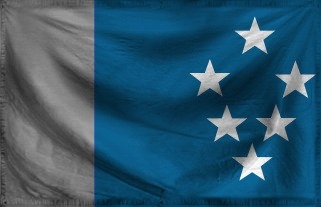
Advertisement

![]() by Townside » Thu Nov 02, 2017 1:31 pm
by Townside » Thu Nov 02, 2017 1:31 pm

![]() by Ainslie » Thu Nov 02, 2017 11:09 pm
by Ainslie » Thu Nov 02, 2017 11:09 pm
The Unified Electorates of Ainslie
Discord gdayer and weather alarm man from The Western Isles."Aprosia and Townside: hey, let's do history and culture, things that affect many aspects of our nations
ainslie: hehe alarm go brrrrr"
- Aprosia, 2021
"Factbooks are never finished, as Ains would say"
- Torom, 2018

![]() by Negarakita » Sun Feb 18, 2018 3:39 am
by Negarakita » Sun Feb 18, 2018 3:39 am

![]() by Verdon » Sun Feb 18, 2018 1:05 pm
by Verdon » Sun Feb 18, 2018 1:05 pm

![]() by Ainslie » Tue Feb 20, 2018 2:07 am
by Ainslie » Tue Feb 20, 2018 2:07 am
Verdon wrote:Question for the assembly.
The FAQ section says that the Ipachi arose from the proto-nyssic group. It also says the Ipachi are a pseudo-polynesian ethnicity.
This is problematic, as the proto-nyssics are a pseudo-celtic group and would look nothing like each other.
What's the solution here?
The Unified Electorates of Ainslie
Discord gdayer and weather alarm man from The Western Isles."Aprosia and Townside: hey, let's do history and culture, things that affect many aspects of our nations
ainslie: hehe alarm go brrrrr"
- Aprosia, 2021
"Factbooks are never finished, as Ains would say"
- Torom, 2018

![]() by Verdon » Tue Feb 20, 2018 10:26 am
by Verdon » Tue Feb 20, 2018 10:26 am
Ainslie wrote:Although I'm not entirely sure if this is canon yet or not, I am planning for the Ipachis to just "turn up" now. Beyond that, I do not have much more of an explanation since i'm planning to adjust history a bit.

![]() by Torom » Tue May 15, 2018 1:30 am
by Torom » Tue May 15, 2018 1:30 am

![]() by Razzgriz » Tue Nov 20, 2018 9:35 am
by Razzgriz » Tue Nov 20, 2018 9:35 am

![]() by Creek Islands » Tue Dec 18, 2018 6:03 am
by Creek Islands » Tue Dec 18, 2018 6:03 am

![]() by Linaviar » Sun Nov 10, 2019 6:01 pm
by Linaviar » Sun Nov 10, 2019 6:01 pm

![]() by Linaviar » Tue Nov 26, 2019 3:31 pm
by Linaviar » Tue Nov 26, 2019 3:31 pm

![]() by New Aapelistan » Wed Nov 27, 2019 1:27 am
by New Aapelistan » Wed Nov 27, 2019 1:27 am

![]() by The Aziran Islands » Sat Nov 30, 2019 9:18 pm
by The Aziran Islands » Sat Nov 30, 2019 9:18 pm

![]() by Ainslie » Sat Dec 14, 2019 3:55 am
by Ainslie » Sat Dec 14, 2019 3:55 am
The Unified Electorates of Ainslie
Discord gdayer and weather alarm man from The Western Isles."Aprosia and Townside: hey, let's do history and culture, things that affect many aspects of our nations
ainslie: hehe alarm go brrrrr"
- Aprosia, 2021
"Factbooks are never finished, as Ains would say"
- Torom, 2018

![]() by Linaviar » Sat Dec 14, 2019 5:58 am
by Linaviar » Sat Dec 14, 2019 5:58 am

![]() by Athara Magarat » Sat Dec 14, 2019 8:17 pm
by Athara Magarat » Sat Dec 14, 2019 8:17 pm
Ainslie wrote:Open Question to the Ipachi-hosting frequenters of this thread: What do your Ipachi descendents look like? We're talking height, hair colour, build, even wingspan if you're feeling into that medieval stuff. Writing a new ipachi factbook so responses would be greatly appreciated.
Cheers!

![]() by The Aziran Islands » Sat Dec 14, 2019 10:02 pm
by The Aziran Islands » Sat Dec 14, 2019 10:02 pm

![]() by Ainslie » Wed Dec 25, 2019 4:13 pm
by Ainslie » Wed Dec 25, 2019 4:13 pm
The Unified Electorates of Ainslie
Discord gdayer and weather alarm man from The Western Isles."Aprosia and Townside: hey, let's do history and culture, things that affect many aspects of our nations
ainslie: hehe alarm go brrrrr"
- Aprosia, 2021
"Factbooks are never finished, as Ains would say"
- Torom, 2018

![]() by Ainslie » Wed Dec 25, 2019 4:29 pm
by Ainslie » Wed Dec 25, 2019 4:29 pm
The Unified Electorates of Ainslie
Discord gdayer and weather alarm man from The Western Isles."Aprosia and Townside: hey, let's do history and culture, things that affect many aspects of our nations
ainslie: hehe alarm go brrrrr"
- Aprosia, 2021
"Factbooks are never finished, as Ains would say"
- Torom, 2018

![]() by The Aziran Islands » Wed Dec 25, 2019 10:45 pm
by The Aziran Islands » Wed Dec 25, 2019 10:45 pm

![]() by Athara Magarat » Wed Dec 25, 2019 11:43 pm
by Athara Magarat » Wed Dec 25, 2019 11:43 pm

![]() by Scantarbia » Thu Dec 26, 2019 1:48 am
by Scantarbia » Thu Dec 26, 2019 1:48 am

![]() by Razzgriz » Thu Dec 26, 2019 3:20 am
by Razzgriz » Thu Dec 26, 2019 3:20 am

![]() by Athara Magarat » Tue Jan 07, 2020 10:47 pm
by Athara Magarat » Tue Jan 07, 2020 10:47 pm
Advertisement
Users browsing this forum: Inishfail
Advertisement